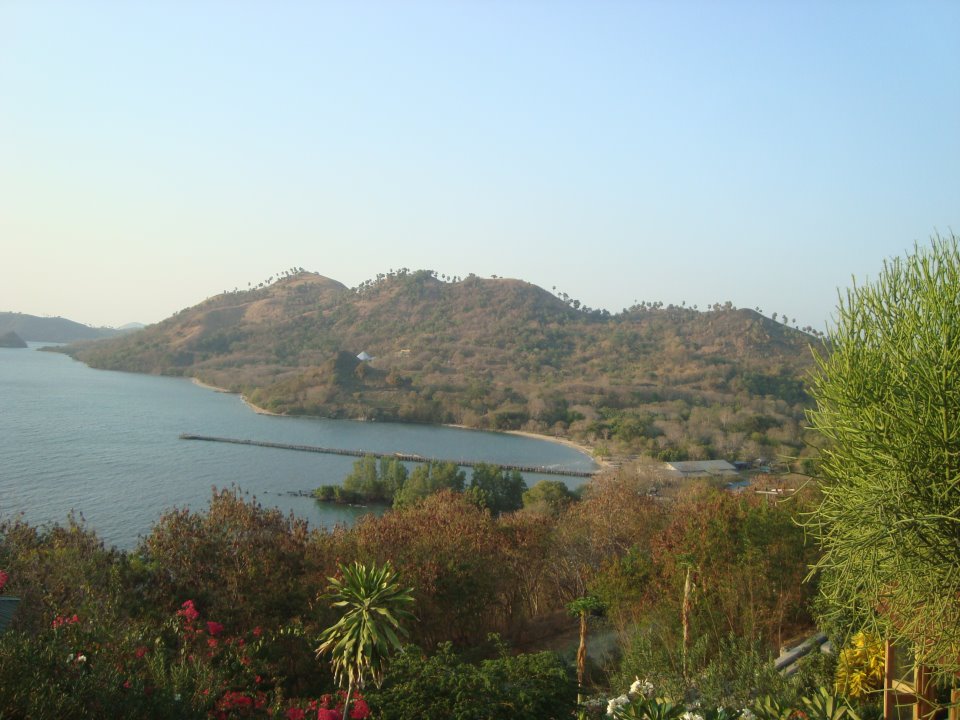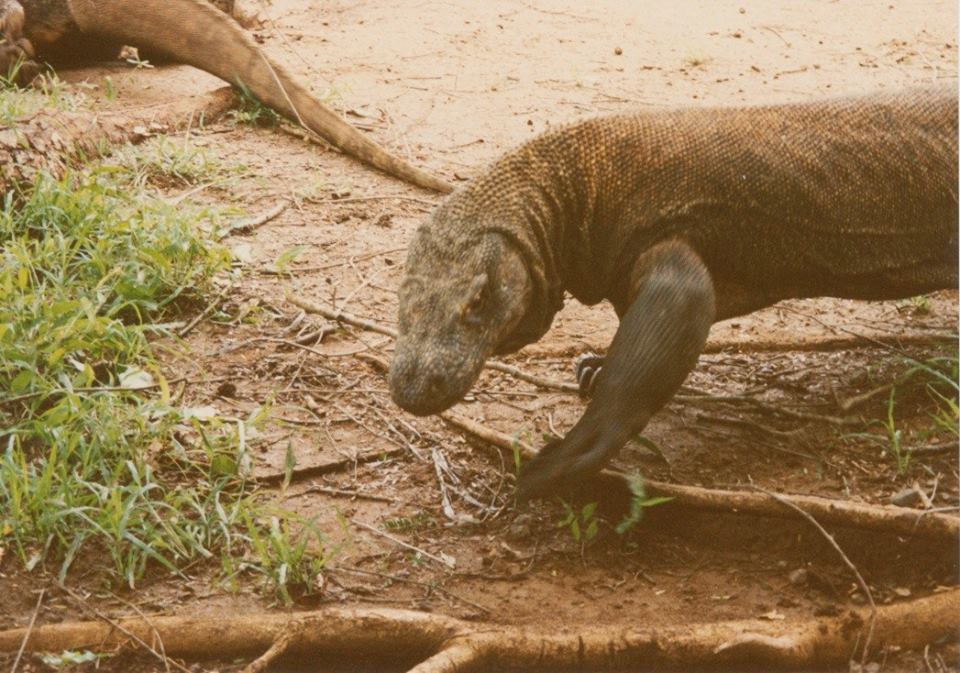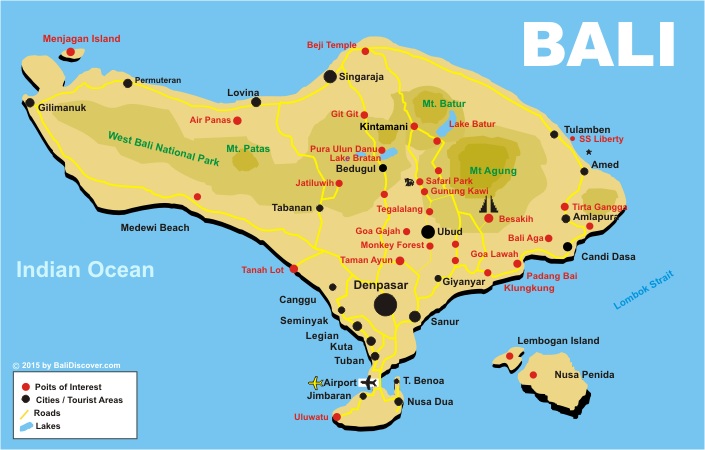General
3 Days 2 Nights – Manta Ray Komodo Adventure (7 Islands Boat Cruise)
Boat Cruise to:
LABUAN BAJO – GILI LABA – MANTA RAY – KOMODO ISLAND – PINK BEACH – RINCA ISLAND – KALONG ISLAND – BIDADARI ISLAND – LABUAN BAJO
- Tour Code: GS 85 K
- Starts: Every day / on request
- Minimum 2 persons
- Departure from Bali (other airports on request)
- Cruise on a Phinisi sailing schooner
Price: USD 635 / per person (min 2 person)
Highlights on this tour:
LABUAN BAJO – GILI LABA – MANTA RAY – KOMODO ISLAND – PINK BEACH – RINCA ISLAND – KALONG ISLAND – BIDADARI ISLAND – LABUAN BAJO
About the boat:
The cruise ship is a traditional Phinisi sailing schooner, hand-crafted from local hardwoods like Teak and Ironwood. With her 6 jaunty sails, you cut across the remote seas in style and grace. Still, we also have satellite phone, International and local radios, life rafts, life jackets and a crew trained in emergency procedures.
The cabin on board is with fan. The boat offer small kitchen / bar.
Boat Facilities : Life jacket, Snorkeling Gear, Simple fishing Equipment, Camping Tend, Sleeping Bag, Shower and Kitchen.
Tour Description:
Day1:
DENPASAR – LABUAN BAJO – GILI LABA – MANTA RAY
Pick up from the airport in Labuan Bajo to the harbor, get on board of the boat and depart to Gili Laba, a Small island on the north east of Komodo Island,here you can climb a hill to have spectacular view of Sumawa on the west and Flores on the east including small island with in the area of Komodo National park.
After exploring Gili Laba we continue the journey to Manta Ray. Here we try to find Manta Ray sites , do snorkeling and over night in this small island. Here you can sleep on the boat or camping.
Day2:
KOMODO ISLAND – PINK BEACH – RINCA ISLAND – KALONG ISLAND
The next morning we are going to Komodo Island to see Komodo dragon sand trekking. After explore Komodo Island we continue to Pink beach for snorkeling to see amazing under water life and stunning panorama surrounding area.
After snorkeling we continue sailing to Rinca Island to see Komodo habitat and other wild animals. In the afternoon depart to Kalong island to see sunset and wait for thousands of bats flying out from their nest,have dinner and overnight on the boat.
Day3:
BIDADARI ISLAND – LABUAN BAJO – DENPASAR
The next morning we continue our journey to Bidadari Island (Angels Island) is small and charming island located north west Labuan Bajo.
This is a water lover’s paradise, white sand and calm waters make it an ideal for swimming and snorkeling spot and especially learning how to dive. After spend few hours in this Island we depart to Labuan Bajo harbor. (end of tour)
Please note:
These are NOT luxury cruise trips!
Our Komodo Liveaboard trips are offered to enjoy the world, not escape from it.
Tour Inclusions :
• Return airplane ticket Bali to Labuan Bajo
• AC coach transfer airport–‐harbor
• Meals during the trip
• Boat with cabin and fan (length 20 meter,width 3.5meter)
• Accommodation on boat (cabin with fan)
• Mineral water
Tour Exclude :
• Airport tax
• Camera charge
• Soft drink and alcohol
• Travel insurance
• Additional all entrance fee at USD 15/person
Price: USD 635 / per person (min 2 person)
Available departures
Please note:
The promotion rates are applicable all year through.
All rates are inclusive government tax and service charge.
Reservations should be made mimum 2 days in advance as we have to arrange everything for your tour.
Please provide us also following details in the "special requirements" field for your pick up: Your hotel in Bali, your address in Bali or cruise ship port.
All internet bookings will be confirmed by email.<br Please check also our terms and condition.
If you have questions please use our general inquiry form
Bali

Bali, Indonesia
Bali, the famed “Island of the Gods”, with its varied landscape of hills and mountains, rugged coastlines and sandy beaches, lush rice terraces and barren volcanic hillsides all providing a picturesque backdrop to its colourful, deeply spiritual and unique culture, stakes a serious claim to be paradise on earth. With world-class surfing and diving, a large number of cultural, historical and archaeological attractions, and an enormous range of accommodations, this is one of the world’s most popular island destinations and one which consistently wins travel awards. Bali has something to offer a very broad market of visitors from young back-packers right through to the super-rich.
Travel & Leisure Magazine has awarded Bali the World’s Best Island in 2009, while the Lonely Planet’s Best of Travel 2010 ranked Bali second place among the world’s Top Regions.
The rapid growth of development in tourism has had a big impact and influences to Bali tradition and lifestyle. Interestingly, Balinese culture is still as what it was, growing along with the of globalization. It is the Balinese civilization what makes the island different from other destination.
The tourism industry is primarily focused in the south, while significant in the other parts of the island as well. The main tourist locations are the town of Kuta (with its beach), and its outer suburbs of Legian and Seminyak (which were once independent townships), the east coast town of Sanur (once the only tourist hub), in the center of the island Ubud, to the south of the Ngurah Rai International Airport, Jimbaran, and the newer development of Nusa Dua and Pecatu.
Bali Geography
The island of Bali lies 3.2 km (2 mi) east of Java, and is approximately 8 degrees south of the equator. Bali and Java are separated by the Bali Strait. East to west, the island is approximately 153 km (95 mi) wide and spans approximately 112 km (69 mi) north to south; administratively it covers 5,780 km2, or 5,577 km2 without Nusa Penida District,[24] its population density is roughly 750 people/km2.
Bali’s central mountains include several peaks over 3,000 metres in elevation. The highest is Mount Agung (3,031 m), known as the “mother mountain” which is an active volcano. Mountains range from centre to the eastern side, with Mount Agung the easternmost peak. Bali’s volcanic nature has contributed to its exceptional fertility and its tall mountain ranges provide the high rainfall that supports the highly productive agriculture sector. South of the mountains is a broad, steadily descending area where most of Bali’s large rice crop is grown. The northern side of the mountains slopes more steeply to the sea and is the main coffee producing area of the island, along with rice, vegetables and cattle. The longest river, Ayung River, flows approximately 75 km.
Bali Climate
Being just 8 degrees south of the equator, Bali has a fairly even climate year round. With sunshine shining throughout the year, Bali has a tropical monsoon climate, with pleasant day temperatures between 20 to 33 degrees Celsius or 68 to 93 degrees Fahrenheit. Rainy season starts from October to March, when the West monsoon brings heavy showers and high humidity. June to September is considered the driest season, with low humidity and it can be fairly cold in the evenings, the best time for any outdoor activities.
Religion
Unlike most of Muslim-majority Indonesia, about 83.5% of Bali’s population adheres to Balinese Hinduism, formed as a combination of existing local beliefs and Hindu influences from mainland Southeast Asia and South Asia. Minority religions include Islam (13.3%), Christianity (1.7%), and Buddhism (0.5%). These figures do not include immigrants from other parts of Indonesia.
Balinese Hinduism is an amalgam in which gods and demigods are worshipped together with Buddhist heroes, the spirits of ancestors, indigenous agricultural deities and sacred places. Religion as it is practised in Bali is a composite belief system that embraces not only theology, philosophy, and mythology, but ancestor worship, animism and magic. It pervades nearly every aspect of traditional life. Caste is observed, though less strictly than in India. With an estimated 20,000 puras (temples) and shrines, Bali is known as the “Island of a Thousand Puras”, or “Island of the Gods”. This is refer to Mahabarata story that behind Bali became island of god or “pulau dewata” in Indonesian language.
Bali Culture
Life in Bali is very communal under the organization of villages. Temple ceremonies, marriage, cremation, farming and even the creative art festivals are decided by the local community institution called “Banjar”. The responsibilities in the day-to-day life are normally administered by both the Banjar and the government. The local government mostly responsible for schools, health clinics, hospitals and roads, and Banjar is responsible for all other aspects of life. There is another association exists in the banjar named “Subak” that concerns to the production of rice and organizes the complex irrigation system. Every family who owns a rice field must be a member of their local Subak, which then ensures that every member gets his fair distribution of water. A banjar consists of an average of 50 to 150 family members, owning a meeting venue called the Bale Banjar, which is used for regular gatherings and a center for local gamelan orchestras and drama groups.
Bali is renowned for its diverse and sophisticated art forms, such as painting, sculpture, woodcarving, handcrafts, and performing arts. Balinese cuisine is also distinctive. Balinese percussion orchestra music, known as gamelan, is highly developed and varied. Balinese performing arts often portray stories from Hindu epics such as the Ramayana but with heavy Balinese influence. Famous Balinese dances include pendet, legong, baris, topeng, barong, gong keybar, and kecak (the monkey dance). Bali boasts one of the most diverse and innovative performing arts cultures in the world, with paid performances at thousands of temple festivals, private ceremonies, or public shows.
The Hindu New Year, Nyepi, is celebrated in the spring by a day of silence. On this day everyone stays at home and tourists are encouraged to remain in their hotels. On the day before New Year, large and colourful sculptures of ogoh-ogoh monsters are paraded and finally burned in the evening to drive away evil spirits. Other festivals throughout the year are specified by the Balinese pawukon calendrical system.
Temples
Bali is known as an island of thousands temples. In every village in Bali, there are several temples and at least one small temple in each home of Balinese which reach to a total of 10.000.
Balinese word for temple is ‘pura’ which means ‘space surrounded by a wall‘. Although many temples are quiet and uninhabited, they are transformed into colorful, active and decorated places of worship when there is a festival. While offerings are made, performances of traditional dances and gamelan, cockfighting and gambling enliven the atmosphere.
All temples derive their direction from the mountains and the sea. The direction toward the mountains, Kaja, is the most significant direction. The direction toward the sea is Kelod. The direction toward the sunrise, Kangin, is found in most secondary shrines.
Bali History
The first Hindus arrived in Bali as early as 100 BC, but the unique culture which is so apparent to any current day visitor to Bali hails largely from neighbouring Java, with some influence from Bali’s distant animist past. The Javanese Majapahit Empire’s rule over Bali became complete in the 14th century when Gajah Mada, Prime Minister of the Javanese king, defeated the Balinese king at Bedulu.
The rule of the Majapahit Empire resulted in the initial influx of Javanese culture, most of all in architecture, dance, painting, sculpture and the wayang puppet theatre. All of this is still very apparent today. The very few Balinese who did not adopt this Javanese Hindu culture are known today as the Bali Aga (“original Balinese”) and still live in the isolated villages of Tenganan near Candidasa and Trunyan on the remote eastern shore of Lake Batur at Kintamani.
With the rise of Islam in the Indonesian archipelago, the Majapahit Empire in Java fell and Bali became independent near the turn of the 16th century. The Javanese aristocracy found refuge in Bali, bringing an even stronger influx of Hindu arts, literature and religion.
Divided among a number of ruling rajas, occasionally battling off invaders from now Islamic Java to the west and making forays to conquer Lombok to the east, the north of the island was finally captured by the Dutch colonialists in a series of brutal wars from 1846 to 1849. Southern Bali was not conquered until 1906, and eastern Bali did not surrender until 1908. In both 1906 and 1908, many Balinese chose death over disgrace and fought en-masse until the bitter end, often walking straight into Dutch cannons and gunfire. This manner of suicidal fighting to the death is known as puputan. Victory was bittersweet, as the images of the puputan highly tarnished the Dutch in the international community. Perhaps to make up for this, the Dutch did not make the Balinese enter into a forced cultivation system, as had happened in Java, and instead tried to promote Balinese culture through their policy of Baliseering or the “Balinisation of Bali”.
Bali became part of the newly independent Republic of Indonesia in 1945. In 1965, after the failed coup d’etat which was allegedly backed by the Communist Party (PKI), state-instigated, anti-communist violence spread across Indonesia. In Bali, it has been said that the rivers ran red with the reprisal killings of suspected communists—most estimates of the death toll say 80,000, or about five percent of the population of Bali at the time.
The current chapter in Bali’s history began in the seventies when intrepid hippies and surfers discovered Bali’s beaches and waves, and tourism soon became the biggest income earner. Despite the shocks of the terrorist attacks in 2002 and 2005, the magical island continues to draw crowds, and Bali’s culture remains as spectacular as ever.
Bali Travel Facts:
Please see our Bali Infos here
Accommodations:
Please find our Bali Hotel List here.
Why not stay in a private luxury Bali Villa ?
Find here our Bali Villa List
Tours and Sightseeing in Bali:
Find here our private Tours for Bali
Read more
Facilities
- Bar
- Free Airport Transfer
- Restaurant
Boat Facilities
Cabin Facilities
We are sorry, there are no reviews yet for this cruise.
Thank you for choosing BaliDiscover.com
Please note:
Most our tours are a private tours, so you can join any day.
The promotion rates are applicable all year through.
All rates are inclusive government tax and service charge.
Reservations should be made mimum 2 days in advance as we have to arrange everything for your tour.
Please provide us also following details in the "special requirements" field for your pick up: Your hotel in Bali, your address in Bali or cruise ship port.
All internet bookings will be confirmed by email.
Please check also our terms and condition.
If you have questions please use our
general inquiry form
We promise to make your holiday in Bali unforgettable by providing you a wonderful Bali sightseeing or activity tour.





